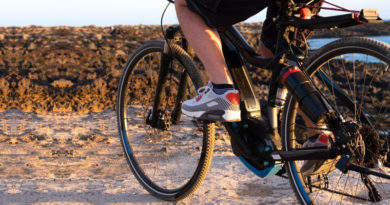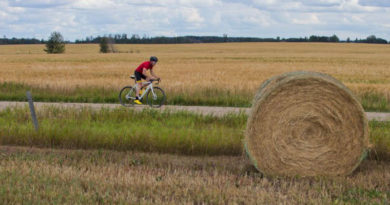Can you put hybrid tires on a mountain bike?
The name hybrid suggests versatility. By that logic, a hybrid tire can perform well in different terrains. In the age of recession and ever-growing inflation, it seems to be an economic option. If you have a mountain bike, you would be tempted to ask this question at some point. Well, the answer is actually yes. You can certainly put hybrid tires on a mountain bike if you want to use one bike in different situations. In fact, it would be a good idea in that case.
While MTB tires are versatile enough to be used on paved roads, they have some downsides. Of course, there is a reason manufacturers designed hybrid tires. Most of us aren’t serious mountain riders. Even if we are, we aren’t doing it all the time. Some of us would like to commute everywhere on our beloved bikes and would love a set of tires that can handle different terrains.
Hybrid vs. MTB Tires
Hybrid Tires
You can place the hybrid tires category in the middle of road tires and mountain tires. Generally, they are thicker than road tires and thinner than MTB tires. The tread pattern is also different. Usually, the tire is smoother in the center for better rolling and has lugs on the edges to handle loose surfaces and turns.
There are different types of hybrid tires. Some are designed to work better on paved surfaces. Such tires can handle loose surfaces like gravel and mud to some extent. Other hybrid tires are designed to work better on loose surfaces. There are also winter hybrid tires made for snow and slippery conditions. The type of tire you choose will depend on your riding conditions.
MTB Tires
MTB tires are specifically built for the mountains. They are thick and heavy. They have deep treads throughout the width to provide better traction on rugged surfaces of the mountains. MTB tires also have better cushioning to absorb aggressive jerks experienced on rocky surfaces.
The robust looks of an MTB tire make an impression on many people that these tires would be more versatile and durable. But that is not entirely true. MTB tires are heavy making them slower and hard to maneuver on paved surfaces.
Furthermore, they are made of softer rubber to provide more grip and shock absorption on a loose surface. But this soft rubber wears out quicker on paved surfaces. Even though MTB tires would outlast road tires due to their thickness, they are not cheap. They would cost you more in the long run.
Features to Consider in a Hybrid Tire
Stiffness
Tire stiffness is determined by the threads per inch and the material used in the bead of the tire. Hybrid tires contain fewer threads per inch making them stiffer than an MTB tire. More stiffness also means more durability.
The bead of the tire is made of one of two materials: steel or Kevlar. Tires with steel beads are stiffer and weigh more. But steel beads are less expensive. Kevlar beads are lighter and of better quality and make the tire foldable. It should go without saying that Kevlar beads are more expensive.
Anti-Puncture
Since hybrid tires go through a variety of conditions, it only makes sense for the tires to be resistant to punctures. It’s a good thing many brands offer anti-puncture technology in their hybrid tires increasing the tires’ durability. A couple of honorable mentions in this regard are Continental and Schwalbe.
Advantages of Hybrid Tires on a Mountain Bike
- Versatile: The most significant advantage of having hybrid tires on a mountain bike is versatility. Most people are casual riders who would come across different types of conditions in the city. Having a tire that can withstand most of them is a huge advantage in terms of economy and performance.
- Better performers: Hybrid tires are faster than MTB tires and more maneuverable because they weigh less and are stiffer than MTB tires.
- More durable: As mentioned above, the softer rubber of MTB tires makes them wear faster on harder paved surfaces. Hybrid tires reduce this issue significantly. Add in anti-puncture technology, and this advantage increased significantly.
Disadvantages of Hybrid Tires on a Mountain Bike
Cost: Hybrid tires can cost a lot. It shouldn’t come as a surprise that manufacturers would charge you some extra bucks for the versatility and because of adequate demand. Again, most of us are casual city riders who would like the versatility. Manufacturers would capitalize the most on this market.
Throwing in features like anti-puncture technology and Kevlar bead drives the cost further up.
Conclusion
Putting hybrid tires on a mountain bike can be beneficial if you are a casual rider. Hybrid tires provide more versatility which is required in the city while MTB tires can be used for casual riding they have disadvantages and hybrid tires are better.
There are different types of hybrid tires. Some are better suited for paved conditions while others are better suited for off-road conditions. There are many choices depending on your riding conditions. Hybrid tires can have varying flexibility and anti-puncture technology adding to their versatility and durability.
For casual riding in varying conditions, they are better performers than MTB tires. They are more versatile, and durable, and perform better in varying conditions. The disadvantage is that hybrid tires have a higher cost. But they are economical in the long run and make for a hassle-free ride in most conditions.




